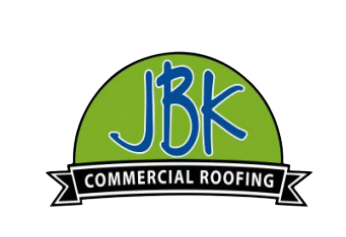6 Ways To Reduced Peak Energy Demand
Filter by Category
Tags
Archives
With rising temperatures and energy costs, it’s just as important for commercial and industrial customers to find creating ways to reduce energy consumption and utility bills as it is for the residential user. For many businesses, expenses relating to energy usage may be second only to payroll and benefits. In an effort to maintain generous salaries and benefits, we’re happy to share some tips for reducing peak energy demand and reducing your overall utility bills.
There are a number of sure-fire ways to reduce commercial energy consumption such as shopping around for the best supply rates possible, conducting a usage data analysis, installing load-sipping LED lighting, relying on programmable thermostats, leveraging your roof, and introducing sustainable energy sources such as solar panels or wind technology. Another incredible effective way to reduce energy costs is to reduce your peak energy demand.
WHAT IS PEAK ENERGY DEMAND?
Peak demand, also known as peak load, describes the period during which your electrical power load is expected to be provided for a sustained period of time at a significantly higher than average supply level (Wikipedia). Base energy is measured in kilowatt-hours (kWh) and peak energy in kilowatts (kW). And the difference can be huge. Think of it this way: a kWh is electricity’s equivalent to the odometer in your car. The kW, on the other hand, lines up nicely with your speedometer. The base amount of energy can be compared to miles driven (your slowly ticking odometer), while peak energy demand is your top speed, as indicated on your speedometer.
These days, peak demand charges can make up a bulk of your total electric bill.
EFFECTIVE PEAK DEMAND REDUCTION STRATEGIES
Your commercial enterprise can save money on power by either determining how to pay less for the energy that you currently use (supply side) or finding ways to use less energy (demand side). Every time your facility finds a way to reduce energy consumption, you’re also reducing your peak energy demand.
Demand side savings, which are accomplished by installing energy-saving lighting and equipment are one way to reduce consumption, modifying your operational habits and facility’s structure are another way in which your business can lower demand and costs.
STAGGER START TIMES
If your facility opens at 8:00 AM and the HVAC, machinery, lighting, and equipment all turn on at the same time, it generates an impressive electrical load. You could reduce consumption and reduce peak demand by simply staggering start times. Remember, the lower your peak demand, the less you pay for power.
SMART LOAD MANAGEMENT & LOAD SHEDDING
While staggering start times is one way to manage your load, you can also run non-essential services outside of peak demand times. This will help you reduce your total electrical demand. Try setting your air conditioning settings up a few degrees during the hottest part of the day. Not only will you minimize the strain on your equipment, but you’re also managing your load wisely.
Consider Investing in “smart” technology that can sense when the grid is in demand and will not turn on compressors during peak times.
INSTALL A COOL ROOF
One of the best ways to reduce peak demand is to shed usage and reduce the heat load on your building. A great way to help reduce your building’s solar load is to install a reflective or “cool” roof. In the article, “Reducing Peak Energy Demand: A Hidden Benefit of Cool Roofs,” researchers write, “Cool roofs use a highly reflective surface to direct a significant portion of solar heat of the sun away from the building. Unlike a dark or non-reflective roof surface that absorbs and transfers solar heat into the building, a light-colored, reflective roof surface reflects and drives solar heat away from the building and into the atmosphere”

INVEST IN NON-CONVENTIONAL HVAC SYSTEMS
Reducing your dependence on electricity during high-load periods is what it’s all about. Investigate natural gas-powered chillers and heat pumps to see what kind of cost savings they may offer.
ENERGY STORAGE
When you move consumption from peak to off-peak periods, not only are you reducing demand, but you’re shifting your usage costs to the much lower off-peak rates. “Phase change materials (PCMs) used for the storage of thermal energy as sensible and latent heat are an important class of modern materials which substantially contribute to the efficient use and conservation of waste heat and solar energy” (Science Direct).
GENERATE YOUR OWN
This one makes a lot of sense. Simons Green Energy writes, “This system employs paralleling embedded generators such as natural gas cogeneration systems, gas generators or parallel-enabled diesel generators. The system uses an alternative energy source, such as natural gas to generate the power instead of buying the power from the grid. This fuel switching has the benefit of avoiding the peak demand charge as there is no peak demand charge for natural gas, and the power generated onsite is very often at a cheaper price than buying the electricity from the grid.”
We’re committed to helping your business succeed. Spend less on energy and use those savings where they count. To learn more about reducing peak demand or the benefits of a Duro-Last Roofing System, contact JBK Roofing.
